
Now available
Gagosian Quarterly Fall 2025
The Fall 2025 issue of Gagosian Quarterly is now available, featuring Andy Warhol’s Blue Liz as Cleopatra (1962) on the cover.
Et in Arcadia ego: Even in Arcadia, there am I.
—Nicolas Poussin
Gagosian is pleased to present Arcadia, an exhibition of landscapes, both real and imagined, by modern and contemporary gallery artists.
The term “Arcadia” originated in ancient Greece, referring to the inland reaches of the Peloponnese where shepherds lived, far from the sea. The term took on a symbolic meaning during the Hellenistic era, invoking rural life as an escape from the moral corruption of the dense, bustling metropolis. Subsequently, this pastoral paradise became an artistic preoccupation for the ages. Idyllic “Arcadian” landscapes were described by Virgil, in his Eclogues, and Cy Twombly scratched the word into his paintings. The sixteenth-century Italian explorer Giovanni da Verrazzano applied the name “Arcadia” to the entire North American Atlantic coast north of Virginia, Twombly’s birthplace. Photographs of Twombly’s daily life, included in this exhibition, range from his time as a student at Black Mountain College in the early 1950s until his death in 2011, and record the verdant landscapes of Virginia and coastal Italy, close-up details of ancient buildings and sculptures, studio interiors, and still lifes of objects and flowers. The entire frame of Andreas Gursky’s Krefeld (1989) is filled with sylvan detail; and Jeff Koons’s Gazing Ball (Titian Pastoral Concert) (2016), in dialogue with the Italian Renaissance master, reflects the viewer, the painting, and its surroundings in a blue glass gazing ball. In a more dystopic vein, Gregory Crewdson’s cinematic stagings present cold and deserted landscapes with traces of human life; while Zeng Fanzhi’s darkly serene vista is enlivened by calligraphic strokes and splatters.
The Arcadian theme is explored further in works by Balthus, Joe Bradley, Cecily Brown, Damien Hirst, Albert Oehlen, Nam June Paik, Giuseppe Penone, Edward Ruscha, Andy Warhol, and Richard Wright. Despite their formal and conceptual differences, all reveal a profound fascination with the natural world, its correspondence to an interior world, and the artistic compulsion to depict it, whether via figuration or abstraction, narrative unity or fragmentation. Arcadia traces the persistence of the theme in recent years, uniting many significant modern and contemporary iterations of a timeless artistic discourse.

The Fall 2025 issue of Gagosian Quarterly is now available, featuring Andy Warhol’s Blue Liz as Cleopatra (1962) on the cover.

Carlos Valladares tracks the artist’s engagements with Hollywood glamour, thinking through the ways in which the star system and its marketing engine informed his work.

At the center of Andreas Gursky’s new exhibition in Paris at Gagosian’s rue de Castiglione gallery is Paris, Montparnasse II (2025), a reengagement with his celebrated photograph from 1993 of the architect Jean Dubuisson’s iconic building in the capital city. In the new work, Gursky reexamines the subject, tracing the changes time has inscribed on the architecture and its occupants. Here, in conversation with the Quarterly’s Wyatt Allgeier and shown alongside behind-the-scenes images from the artwork’s making, the artist addresses his motivations and interests in this long-term project.

On the occasion of Willem de Kooning: Endless Painting, curated by Cecilia Alemani and comprising paintings from 1944 through 1986 and two sculptures, the Quarterly revisits a conversation between Albert Oehlen and John Corbett from 2013. The pair reflect on de Kooning’s late work and its lasting influence on them.

The Spring 2025 issue of Gagosian Quarterly is now available, featuring Cy Twombly’s Paesaggio (1986) on the cover.

Bartolomeo Sala considers the brief yet revolutionary dreams of Arte Povera. On the occasion of a retrospective at the Bourse de Commerce, Paris, he explores the historical conditions that gave rise to the radical midcentury movement and the warnings we might glean today from its legacy.

Jenny Saville reflects on Cy Twombly’s poetic engagement with the world, with time and tension, and with growth in this excerpt from her Marion Barthelme Lecture, presented at the Menil Collection, Houston, in 2024.
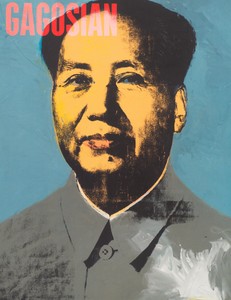
The Fall 2024 issue of Gagosian Quarterly is now available, featuring Andy Warhol’s Mao (1972) on the cover.

Jessica Beck examines Andy Warhol’s return to painting in the 1970s, focusing on the artist’s Mao series.

Scholar and researcher Yves Guignard, who is working on Balthus’s archives for a revision of the Balthus catalogue raisonné, examines the artist’s engagement with drawing, arguing for a more concerted attention to these works than scholarship has paid them.
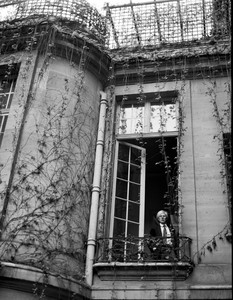
Andy Warhol’s Insiders at the Gagosian Shop in London’s historic Burlington Arcade is a group exhibition and shop takeover that feature works by Warhol and portraits of the artist by friends and collaborators including photographers Ronnie Cutrone, Michael Halsband, Christopher Makos, and Billy Name. To celebrate the occasion, Makos met with Gagosian director Jessica Beck to speak about his friendship with Warhol and the joy of the unexpected.
In this video, Jessica Beck, director at Gagosian, Beverly Hills, sits down to discuss the three early paintings by Andy Warhol from 1963 featured in the exhibition Andy Warhol: Silver Screen, at Gagosian in Paris.
Richard Wright and Martin Clark, director of Camden Art Centre, London, discuss Wright’s latest body of work, recent commissions, and new monograph, which provides a comprehensive overview of his practice between 2010 and 2020.
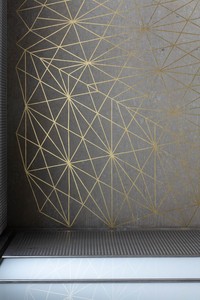
In an excerpt from his forthcoming monograph, Richard Wright pens a personal and philosophical text about painting.
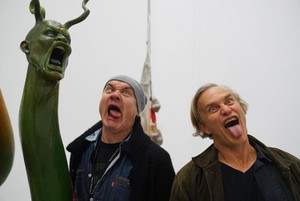
In conversation with James Fox, Damien Hirst reflects on the artwork of his longtime friend.
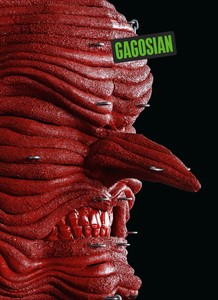
The Fall 2022 issue of Gagosian Quarterly is now available, featuring Jordan Wolfson’s House with Face (2017) on its cover.

Eleonora Di Erasmo, cocurator of Un/veiled: Cy Twombly, Music, Inspirations, a program of concerts, video screenings, and works by Cy Twombly at the Fondazione Nicola Del Roscio, Rome, reflects on the resonances and networks of inspiration between the artist and music. The program was the result of an extensive three-year study, done at the behest of Nicola Del Roscio in the Rome and Gaeta offices of the Cy Twombly Foundation, intended to collect, document, and preserve compositions by musicians around the world who have been inspired by Twombly’s work, or to establish an artistic dialogue with them.
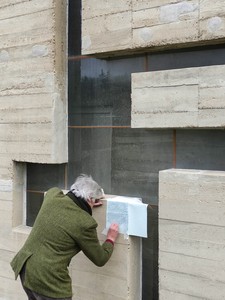
Le Couvent Sainte-Marie de La Tourette, in Éveux, France, is both an active Dominican priory and the last building designed by Le Corbusier. As a result, the priory, completed in 1961, is a center both religious and architectural, a site of spiritual significance and a magnetic draw for artists, writers, architects, and others. This fall, at the invitation of Frère Marc Chauveau, Giuseppe Penone will be exhibiting a selection of existing sculptures at La Tourette alongside new work directly inspired by the context and materials of the building. Here, Penone and Frère Chauveau discuss the power and peculiarities of the space, as well as the artwork that will be exhibited there.

Gillian Pistell writes on the loaded symbol of the American flag in the work of postwar and contemporary artists.

In 2020, the Museum of Fine Arts, Boston, announced their plan for a survey of Cy Twombly’s artwork alongside selections from their permanent ancient Greek and Roman collection. The survey was postponed due to the lockdowns necessitated by the coronavirus pandemic, but was revived in 2022 with a presentation at the J. Paul Getty Museum in Los Angeles from August 2 through October 30. In 2023, the exhibition will arrive at the Museum of Fine Arts, Boston. The curator for the exhibition, Christine Kondoleon, and Kate Nesin, author of Cy Twombly’s Things (2014) and advisor for the show, speak with Gagosian director Mark Francis about the origin of the exhibition and the aesthetic and poetic resonances that give the show its title: Making Past Present.